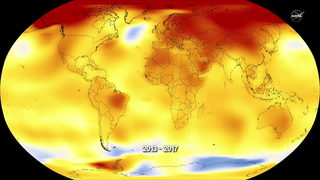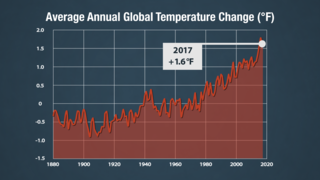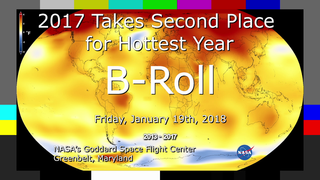Earth
ID: 12822
Earth's surface temperatures in 2017 were the second warmest since since 1880, when global estimates first become feasible, NASA scientists found.
Global temperatures in 2017 were second only to 2016, which still holds the record for the hottest year. However, 2017 was the warmest year without an El Niño.
In a separate, independent analysis, NOAA scientists found that 2017 was the third-warmest year in their record. The minor difference is due to different methods to analyze global temperatures used by the two agencies, although over the long-term the records remain in strong agreement.
Read the release.
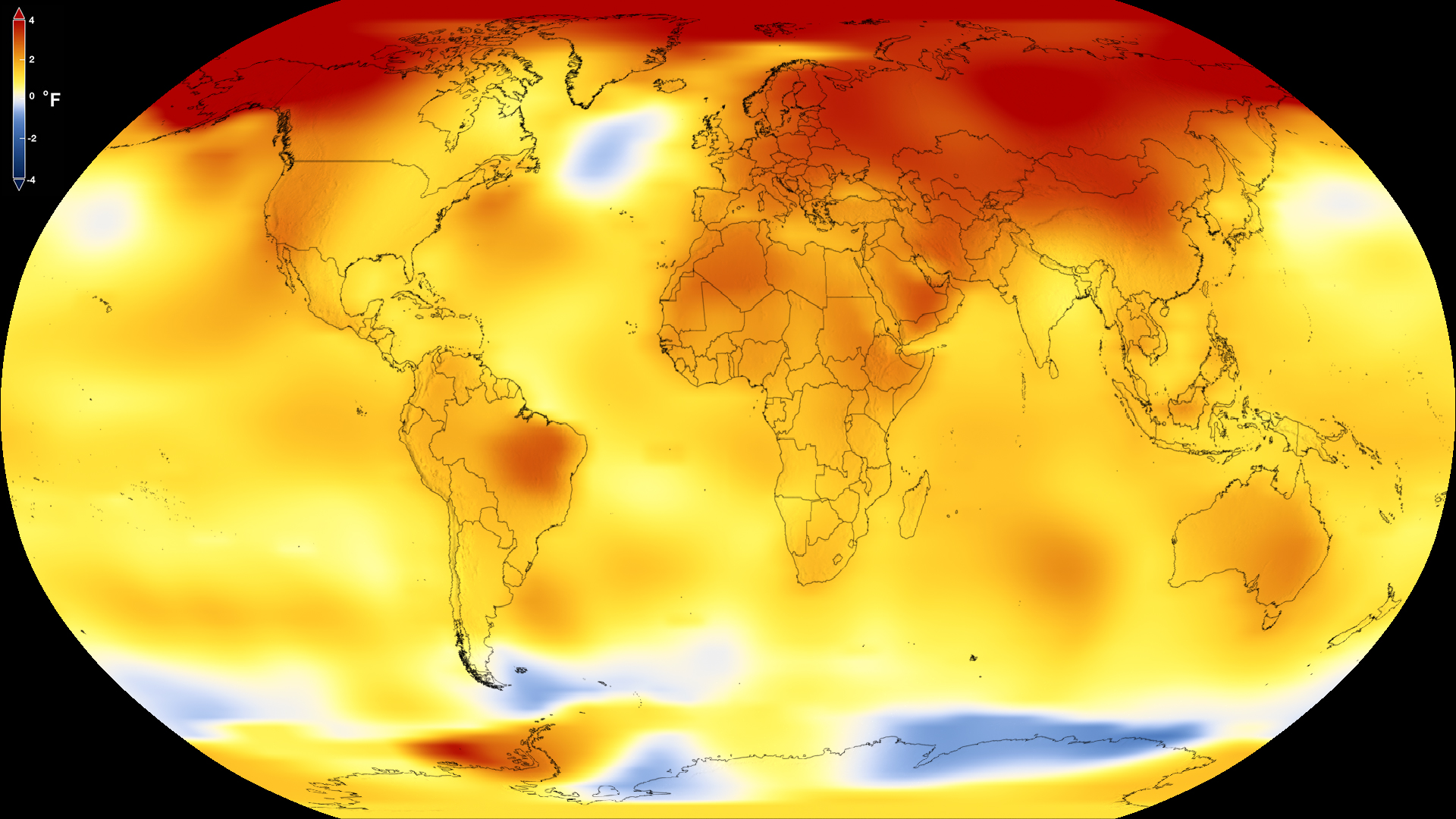
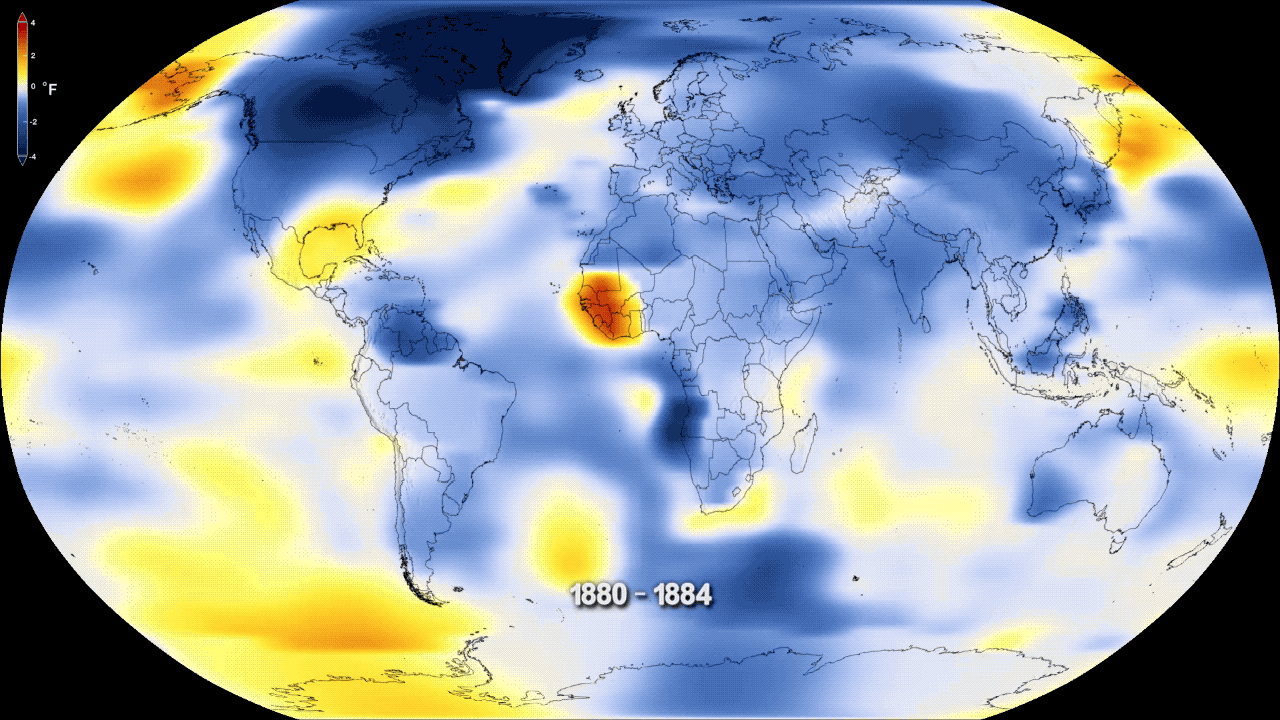
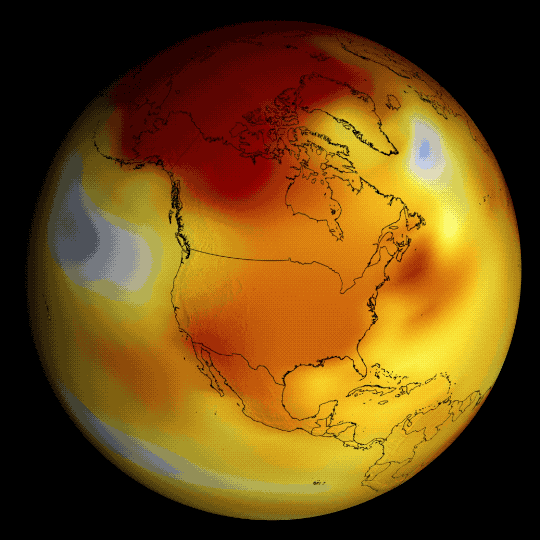
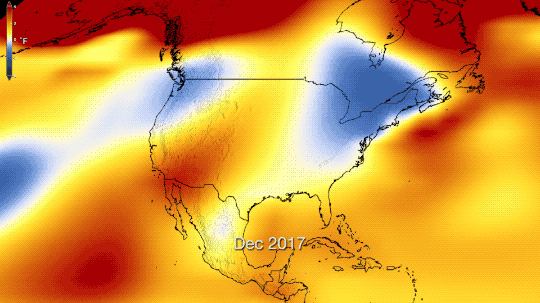
2017 Takes Second Place for Hottest Year
Global temperatures in 2017 were second only to 2016, which still holds the record for the hottest year. However, 2017 was the warmest year without an El Niño.
In a separate, independent analysis, NOAA scientists found that 2017 was the third-warmest year in their record. The minor difference is due to different methods to analyze global temperatures used by the two agencies, although over the long-term the records remain in strong agreement.
Read the release.




Used Elsewhere In
Related
Credits
Kathryn Mersmann (USRA): Lead Producer
Kate Ramsayer (Telophase): Lead Writer
Gavin A. Schmidt (NASA/GSFC GISS): Lead Scientist
Kate Ramsayer (Telophase): Lead Writer
Gavin A. Schmidt (NASA/GSFC GISS): Lead Scientist
Please give credit for this item to:
NASA's Goddard Space Flight Center
NASA's Goddard Space Flight Center
Short URL to share this page:
https://svs.gsfc.nasa.gov/12822
This item is part of this series:
Narrated Movies
Keywords:
SVS >> Climate
DLESE >> Cryology
SVS >> HDTV
SVS >> Heat
SVS >> Temperature
SVS >> Temperature Trend
GCMD >> Earth Science >> Climate Indicators
GCMD >> Earth Science >> Atmosphere >> Atmospheric Temperature >> Temperature Tendency
GCMD >> Earth Science >> Cryosphere >> Sea Ice >> Heat Flux
SVS >> Climate Change
SVS >> Global Temperature
NASA Science >> Earth
GCMD keywords can be found on the Internet with the following citation: Olsen, L.M., G. Major, K. Shein, J. Scialdone, S. Ritz, T. Stevens, M. Morahan, A. Aleman, R. Vogel, S. Leicester, H. Weir, M. Meaux, S. Grebas, C.Solomon, M. Holland, T. Northcutt, R. A. Restrepo, R. Bilodeau, 2013. NASA/Global Change Master Directory (GCMD) Earth Science Keywords. Version 8.0.0.0.0
https://svs.gsfc.nasa.gov/12822
This item is part of this series:
Narrated Movies
Keywords:
SVS >> Climate
DLESE >> Cryology
SVS >> HDTV
SVS >> Heat
SVS >> Temperature
SVS >> Temperature Trend
GCMD >> Earth Science >> Climate Indicators
GCMD >> Earth Science >> Atmosphere >> Atmospheric Temperature >> Temperature Tendency
GCMD >> Earth Science >> Cryosphere >> Sea Ice >> Heat Flux
SVS >> Climate Change
SVS >> Global Temperature
NASA Science >> Earth
GCMD keywords can be found on the Internet with the following citation: Olsen, L.M., G. Major, K. Shein, J. Scialdone, S. Ritz, T. Stevens, M. Morahan, A. Aleman, R. Vogel, S. Leicester, H. Weir, M. Meaux, S. Grebas, C.Solomon, M. Holland, T. Northcutt, R. A. Restrepo, R. Bilodeau, 2013. NASA/Global Change Master Directory (GCMD) Earth Science Keywords. Version 8.0.0.0.0
